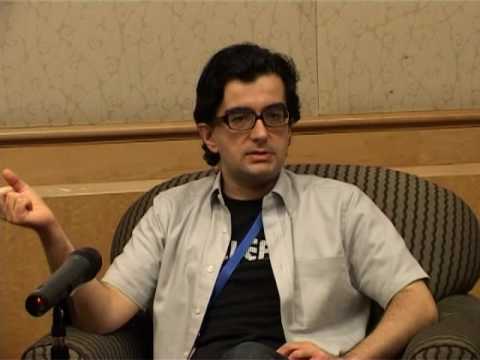Are You Worried You’re Burnt Out?

Picture is from freepik.com/jcomp
A host asked me a simple question on a recent podcast interview: “How do you know if you are burnt out?” He figured I would know. I’m not a doctor or any type of clinical professional, but I’ve spent time with an awful lot of dedicated professionals who’ve arrived at a state of burnout (or the zone I think of as burnout adjacent).
And although Indeed now tells us that a frightening 52% of workers feel burnt out, denial can mask a lot of this pain. It holds back the tears and anger and weariness. Like a opossum crossing the freeway, so many workers keep heading forward to their goal, unaware of the danger of this ignored exhaustion. Too many people say they’re not stressed or worn out, but I wish I could say, “Let’s ask your adrenal glands.”
Men, especially, have been found to score lower than women for emotional self-awareness, a critical component of emotional intelligence. They can have trouble looking at their own gauges and seeing when they are mad, tired, or defeated and often just soldier on until a collision. When they eventually face a medical event, a financial downturn, a relationship crisis, or a blow to their business, it wakes them up. And that’s good. But I wish there was another way to get your attention.
The torturous marathon that has been the pandemic has amplified both the mental health threat of burnout and the self-protection mechanism of denial as we all try to cover-up and outdo each other.
To answer the question “How do you know when you are actually burnt out?” here is my take:
It does not matter.
It does not matter if you have—or have not—quite crossed the invisible line between being really fried and technically burnt. What matters is the underlying impulse that is causing you to ask the question. This impulse comes from somewhere. It is that wise inner voice that is trying to get your attention. It’s weakly waving its hand and saying, Please . . . give . . . me . . . rest! It’s telling you that something has to change.
True, there is a checklist of classic burnout signs we should watch for, including physical exhaustion, cynicism, reduced interest, feeling defeated, depression, or lack of motivation, but I want to skip the debate over the label and move right to making you feel better.
Related:
- 5 Techniques To Outsmart Overwhelm At Work
- Workplace Burnout Factors And How To Combat Them
- Self-Care is Key To Avoid Executive Burnout
1. Bathe yourself in self-acceptance. Tell yourself a hundred times a day, if necessary, how our current communal crispiness is common, understandable, and shared. Accept it with open, nonjudgmental arms. The extra stress caused by being disappointed in yourself for being stressed is extra pressure you can’t afford. Practice self-acceptance by lovingly imagining yourself recognizing and accepting the burnout of others, and then, when the reflex of kindness grows stronger, turn it back to yourself.
2. Take a day off—and expect nothing. Burnout is not like a hangover; it’s a result of prolonged conditions that take a while to shift. So, just to begin to clear your head, take a day off without framing it as a one-day fix. Do more resting than Netflix-ing. Try to touch as many simple healthy influences as possible during this time, such as sunlight, warm meals, playing solitaire, spending time with loved ones, low-stimulation activities, and actual rest. Choose music over intellectual podcasts. Let the dishes sit. But do not expect that anything will be specifically better or different when this day concludes. We need an accumulation of low-expectation days and low-expectation hours. Over time, and only over time, they will soothe and refuel us.
3. Find a confidante and make a plan. Next, if you work for an employer, inventory in your mind all the bosses in your company and ask yourself, “Which one seems the most loving?” Even if you do not report to that person, see if you can schedule a short one-on-one meeting with them to share your situation and ask for their guidance. If you have a therapist, career coach, counselor, mentor, or clergy who you can confide in, this is the time to include them as you craft a plan that could include more effective boundaries by clarifying expectations at work or even short-term leave. If you are the leader who’s watching an employee burn out without awareness, reverse this process, and sit them down for a chat.
4. Find an accountability buddy. Every morning of my life for years I have written an email to my girlfriend Mindi because she is my accountability buddy. We exchange promises of how we plan to enact our day and we report back the next day with no judgment to reflect on how it went. This simple technique takes me sixty seconds but helps me make sure that my life is intentional. It’s a simple step that helps me check my expectations and makes sure my daily goals aren’t bigger than my capacity. It is so helpful to find that one person who has your back, and to have theirs, trading gentleness in our responses when the lists don’t get fully done. If burnout is the most pressing issue for you, affecting your ability work with confidence and moments of joy, use the accountability format to put your plan from step three into action and support you going forward.
Challenging the zone of burnout must now be the priority. We must, en masse, eradicate the shame of rest and replace it with the pride of self-care. We must create workplaces where everyone has explicit and tacit permission to stop masking the truth. Teams and companies can do this by putting their own vulnerabilities, fears, and frailties forward and by championing mental health as an overt company priority; this action serves every human among us and in turn every business.
This article was also published on Juliet Funt's LinkedIn.
Need more insight on this topic? Watch this interview with Lynne Cazaly and pick up more tips on how to manage the feeling of overwhelm at work.
Dear employers, do you know if your employees are overwhelmed or overworked? You can prevent burn-outs by engaging and understanding your employee's concerns through the use of technology like Happily (or Budaya for those from Indonesia). This app is an amazing engagement app built for organisations to drive engagement amongst employees. It has amazing analytics and also provides activities for employees to be fully immersed in the organisation's culture and values. To find out more, click here or email info@leaderonomics.com
Functional
Tags: Transformation & Change, Stress & Trauma, Self-regulation, Self-Control, Self-Awareness





